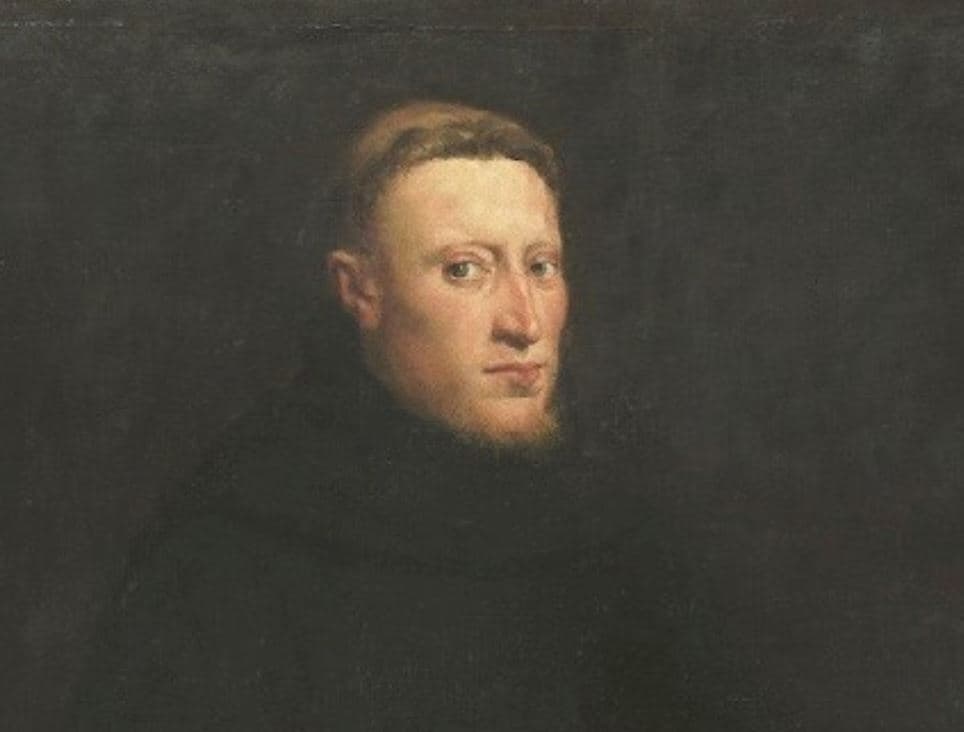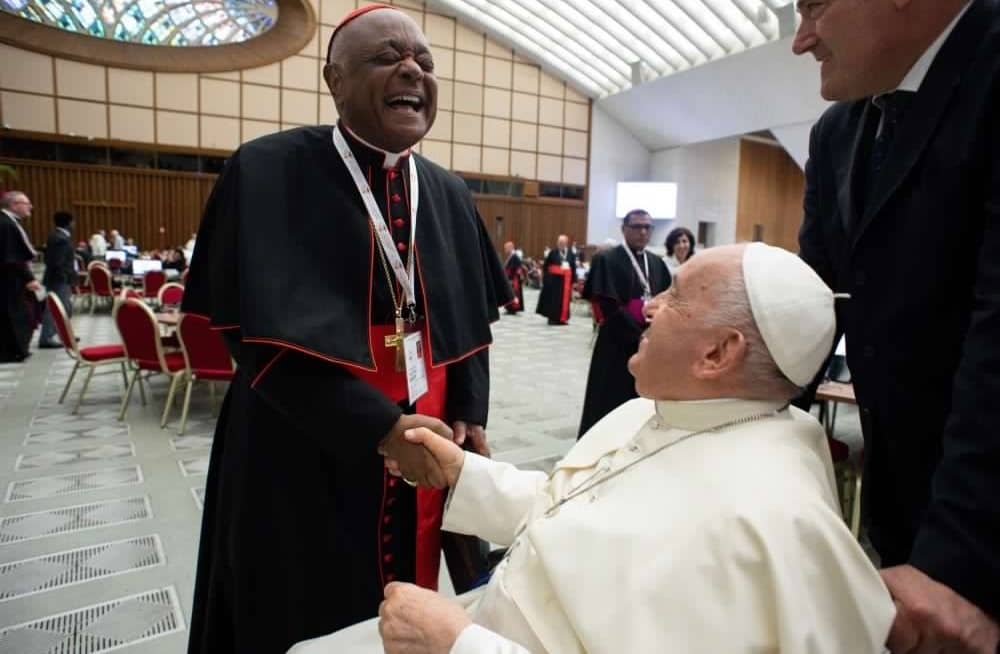LEICESTER, United Kingdom – Many of the fundamental historical questions surrounding the Protestant Reformation remain open, and one little-known 16th century Italian scholar might be a key to finding answers.
Onofrio Panvinio was an Augustinian friar – the same religious order as Martin Luther – who traveled across Italy to search out the documentation surrounding the history of the papacy.
“In his research on both ancient Rome and the medieval Church, Panvinio carried out pioneering work,” said Stefan Bauer, author of The Invention of Papal History: Onofrio Panvinio Between Renaissance and Catholic Reform.
“Contemporaries referred to him as the ‘father of chronology’ because he solved technical problems in the interpretation of the ancient Roman calendars – fragments of which had been discovered in the Roman Forum,” he told Crux.
Bauer is a Lecturer in History at Royal Holloway, University of London.
He said the title of his latest book is meant to be provocative, since others had done papal histories before Panvinio, however he defended the wording.
“I believe it is legitimate to speak of the ‘invention’ of papal history because Panvinio not only assembled more material on papal history than any scholar up to his time but also was prepared to apply source criticism and ask hard questions about the reality of change in the Church’s past. Panvinio’s creative combination of both was daring and path breaking,” Bauer said.
What follows is his email conversation with Crux.
Crux: Who is Onofrio Panvinio and why should we care?
Bauer: Onofrio Panvinio was born in 1530 and died in 1568. An Italian from Verona, he wore the black cowl of the Order of the Augustinian Hermits. His Order allowed him to receive an education at its general study houses in Naples and Rome, and to accept the patronage and support of the Roman Church’s wealthiest cardinal, Alessandro Farnese. In Rome, Panvinio lived outside of his Augustinian house, in the cardinal’s household. He was granted the – possibly unique – permission to become a full-time historian while remaining a friar. Instead of chanting mass with his brothers in the choir, or begging for alms and food, Panvinio set out to conduct historical research. His first interest was in pagan antiquity but, given the intellectual climate of 1550s Rome, he was soon encouraged to deal with church history. For his works on ecclesiastical history, Panvinio traveled across Italy to churches and monasteries, into whose archives he dug deeply. Despite his pioneering work, however, Panvinio has been neglected by later scholarship. His works were suppressed by the authorities, beginning with Pope Pius V, as his interest in the past was perceived as being too open and critical. Panvinio had highlighted some of the conflicts and inner struggles that had existed in the Church from its beginnings – as well as the Church’s drive for worldly power since the eleventh century. In fact, after Panvinio’s death, the Roman hierarchy embraced one of his contemporaries, Cesare Baronio, as the Church’s official historian. Baronio presented a more agreeable narrative of a Church that had ‘always been the same’ and had stayed true to its original ideals.
What was the nature of the Reformation-era historical debate over the papacy? Which side had the better historians?
The Reformation was a great age of debate and controversy, and history played a key role in these debates. Catholics taunted the Protestant Reformers by asking, “Where was your Church before Luther?”, and the answer to this question had to be historical. Protestants demonstrated that, from their point of view, the Church had degenerated and become corrupt after apostolic times. At the same time, there had always existed small groups of righteous believers that had resisted corruption – proto-Protestants. Catholics, on the other hand, embraced Church tradition; they argued that although individual clergymen were sometimes corrupt, the Church as an institution had always remained a shining image of divine truth. Consequently, church history became a quarreling ground. Both Catholics and Protestants used history to establish and fortify their respective confessional identities. To be a good historian, however, means to not suppress problematic evidence that might conflict with the official line of thought propagated by the leaders of your faith. Although writers of history on both sides followed this rule, it is traditionally believed that Protestant historians had the upper hand in the development of the critical historical method. By contrast, my book shows that Catholic historians in the sixteenth century were just as interesting.
How was Panvinio different from other historians of the period?
In his research on both ancient Rome and the medieval Church, Panvinio carried out pioneering work. Contemporaries referred to him as the “father of chronology” because he solved technical problems in the interpretation of the ancient Roman calendars – fragments of which had been discovered in the Roman Forum. For his Commentaries on the Roman Republic, Panvinio used evidence such as inscriptions, coins and other archaeological remains. His approach also included a new interest in scholarly illustrations as a means of enhancing the reader’s knowledge of the ancient world; he employed artists to produce exact representations of ancient scenes, such as Roman triumphs and games. In addition, his research on the papal past was extensive, and he subjected the evidence he found to perceptive historical criticism – a unique position for a Catholic historian of his time in Rome.
In your book, you emphasize his biography of Gregory VII. Why was this so important?
Among Panvinio’s works, his monumentally large History of Papal Elections, from Christ to his own period, stands out for several reasons. No writer had ever attempted to write a history of this kind, and – believe it or not – no one has made any similarly ambitious attempt to the present day. Histories of papal elections after Panvinio either were limited to dealing with specific periods or were not fully based on all available sources. Panvinio’s thirst for knowledge and his appetite for collecting sources were unparalleled.
However, it was not just a question of finding the sources; they also had to be interpreted historically. Panvinio distinguished the various forms of papal elections that had taken place, which meant showing that there had been change and diversity in the Church’s past. Also, he documented the quarrels and factions during the elections, and the conflicts and schisms that followed them. Lastly, he criticized the fact that the Church had become ‘power hungry’ in the Middle Ages, beginning with the pontificate of Gregory VII (1073–1085).
Panvinio displayed Pope Gregory as the contradictory figure that he really was: A strict reformer who pursued a program of purification of the clergy, but also a hard-headed pontifex who tried to extend the Church’s control over the investiture of bishops in the Holy Roman (German) Empire. With Gregory, as Panvinio argued, the Church began treating the emperors as “the lowest slaves.” He wrote that, before Gregory, there had been a “humble, dejected, poor Church of God, which was tossed about by the command of profane rulers.” After Gregory, “the same Church became the ruler of the whole world.” The Church gradually “grew to such a height that it labored under its immense size and appeared to break under its own weight.”
By including these historical reflections, Panvinio placed himself within the Catholic Reformation – a precarious and ever-shifting movement which, in the second half of the sixteenth century, was more often than not reined in and suppressed by both the reigning pontiffs and the Roman Inquisition.
The title of your book is The Invention of Papal History. Why?
The title of my book, The Invention of Papal History, is, of course, somewhat of a provocation. Scholars of Late Antiquity and the Middle Ages will object that papal history was born much earlier, in texts such as the Liber pontificalis (Book of Pontiffs), an anonymous series of biographies of popes from St Peter onwards; its first part was written in the sixth century.
Although I do not attempt to trace the full story of papal historiography, I provide examples of how Panvinio used earlier sources. I believe it is legitimate to speak of the “invention” of papal history because Panvinio not only assembled more material on papal history than any scholar up to his time but also was prepared to apply source criticism and ask hard questions about the reality of change in the Church’s past. Panvinio’s creative combination of both was daring and path-breaking.
What bearing does this have on the Church today?
Not just modernity (whose roots stem from the sixteenth century) but also history is still an issue that the Church is trying to come to terms with. Perhaps the question of modernity is more central to the thought of Pope Francis, while history was more of a concern to Benedict XVI. I invite readers to see my book as a reflection on the ambivalent role of history in the self-understanding of the Church. Many of the fundamental questions posed by the Reformation with regard to history remain open. In a nutshell, our sixteenth-century friar is closer to today’s reality than might at first seem.
















